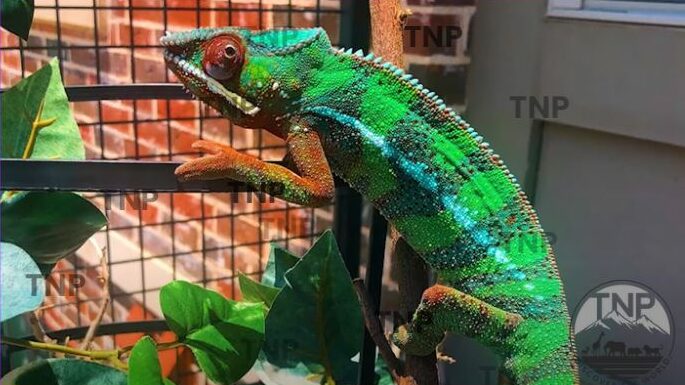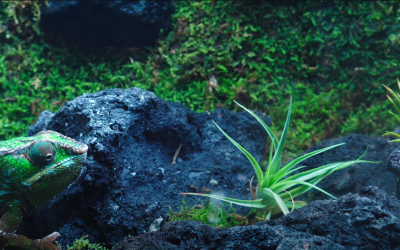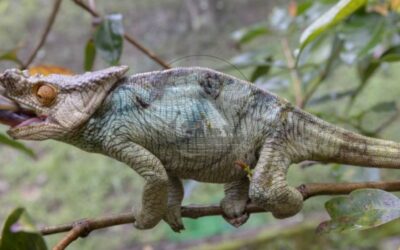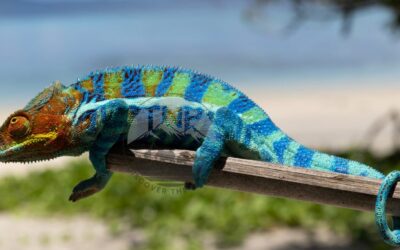Creating a chameleon terrarium is not an easy task. And not everyone is handy enough to create one. So, which path should you choose? This article aims to guide you in making the right decision based on your circumstances and capabilities.
Chameleons are fragile creatures. They require a specific type of living place to decrease stress and ensure their well-being. Because store-bought aquariums may not always provide the optimal environment for sensitive chameleons, you should try building a chameleon terrarium as your next DIY project.
Creating the Perfect DIY Chameleon Tank For An Optimal Habitat
Considerable Things While Choosing A Chameleon Tank Terrarium
Choosing the perfect terrarium for your pet chameleon is vital for its well-being. Consider essential factors such as size, ventilation, and temperature control. Opt for a spacious enclosure that allows your chameleon to move freely, with ample branches and plants for climbing and hiding.
Adequate ventilation is crucial to maintaining fresh air circulation and preventing respiratory issues. Ensure the terrarium can sustain the right temperature and humidity levels, mirroring your chameleon’s natural habitat.
Easy cleaning and feeding access are also essential for you and your pet. Considering these aspects, you’ll create a comfortable and safe environment for your chameleon to thrive happily. Now, let’s elaborate on these points for better understanding!
Size
The size of a chameleon’s cage is immensely significant for its overall health and well-being. The optimal chameleon habitat boasts screen sides measuring 24x24x48 inches, and height plays a pivotal role.
The Zoo Med Reptibreeze Open Air Screen Cage XL is highly recommended for a fitting enclosure as it perfectly adheres to the abovementioned dimensions. An alternative option is the Exo Terra Screen Terrarium, measuring 36x18x36 inches.
This terrarium for chameleons caters to those seeking a broader cage with a different shape than the standard tall models. Both options are conveniently accessible on Amazon.
Also, you can build a chameleon terrarium from scratch using materials like wood, mesh, and glass. This allows customization but requires carpentry skills and might not ensure proper ventilation or lighting. So, to save time and energy, I suggest you buy one of the terrariums suggested before.
How Often Does A Chameleon Eat: A Comprehensive Guide
Ventilation or Airflow
Chameleons need good airflow to stay healthy. Without fresh air, they could get sick and even die from breathing problems and overheating. In tanks, the only air comes from the top, but only if there are mesh screens. Glass tanks don’t have much air unless they have unique vents.
Some tanks have mesh on the sides and glass in the front and back, which is a better choice. So, it’s crucial to pick a well-ventilated tank or use mesh enclosures for reptiles and amphibians, which should be carefully chosen to match their specific habitat needs. To make sure your chameleon stays happy and healthy. Fresh air is super important for their well-being!
Enclosure
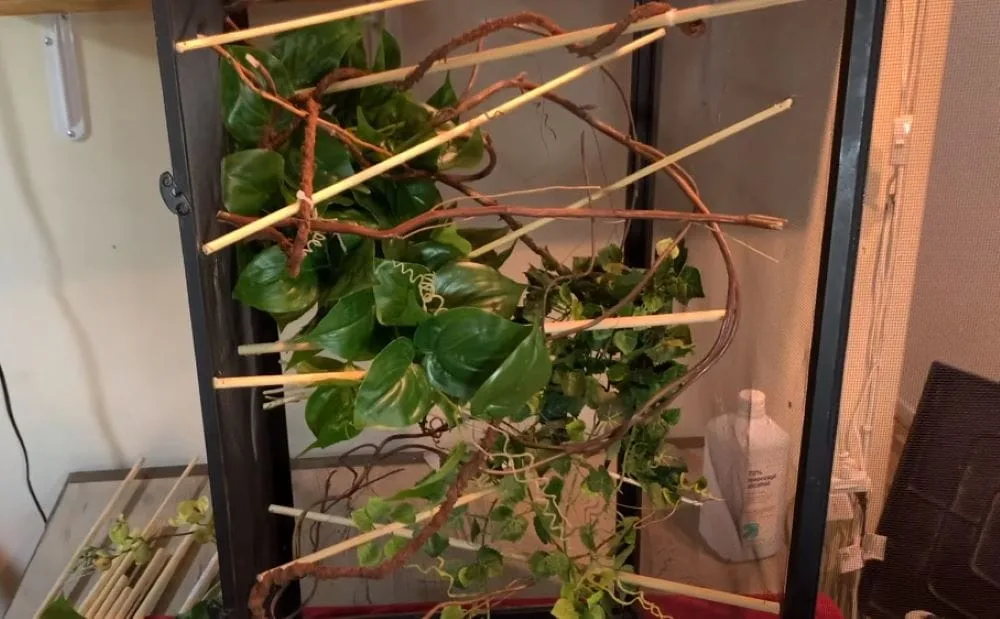
When considering terrarium enclosures for chameleons, I know three main options come to your mind: glass, hybrid, and screen enclosures; each can be made suitable with the addition of branches and potted plants.
Glass Terrarium As A Chameleon Habitat
Different materials have different properties, which can be good or bad based on your needs. Glass terrariums provide excellent visibility into the habitat and effectively retain heat and humidity. However, they tend to have limited airflow, making proper ventilation and humidity maintenance more challenging.
Glass is a good insulator, meaning it keeps heat inside for a long time, unlike a screen chameleon cage, which offers better ventilation. Unlike cages with screens where heat escapes, a glass cage traps heat, building it up. This is great for keeping pets warm in cold places, but it can make the cage too hot in warm locations.
Glass also traps humidity, which is helpful if you need a humid environment. However, it can be problematic if your place is already moist. You can’t keep adding heat to a glass cage because it retains heat well.
To manage this, you need to turn off the heat lamp when it’s warm enough inside and monitor humidity to prevent it from getting too high. Glass cages are heavy, often lack proper drainage, break easily, and might be challenging to find in the right size for your pet.
Hybrid Enclosures
Hybrid enclosures combine solid sides with vent or screen configurations, balancing controlled conditions and ventilation. Compared to glass enclosures, they provide better control over humidity and temperature but might require more maintenance and management of the microclimate.
Screen Cage
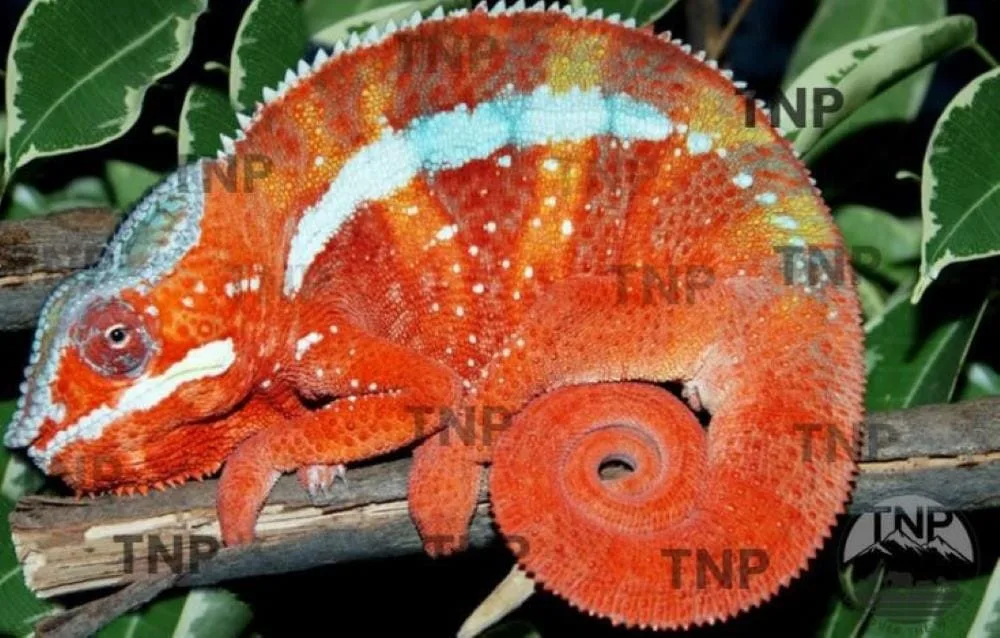
Screen cages, commonly crafted from lightweight aluminum, resemble the material used in household window screens. Despite individual pieces being thin and delicate, their assembly into a box shape through screws results in a sturdy and stable structure.
This design choice allows chameleon enthusiasts to provide spacious enclosures without excessive weight. While some may doubt the strength of these cages, they merely need to support the lightweight chameleons. Sturdiness, rather than extreme strength, is essential.
You must be cautious when purchasing mass-produced and inexpensive cages, and consider a reliable dragon strand or dragon ledge cage for longevity and safety. These may employ subpar materials like painted metal screens, leading to rust and potential damage, unlike high-quality materials used in dragon strand enclosures suitable for reptiles and amphibians.
A simple magnet test can be conducted to assess a cage’s quality. If a magnet adheres, it indicates potential rust issues in the screen, frame, screws, or hinge pins. These enclosures provide excellent airflow and ventilation, simulating the chameleon’s natural habitat.
Screen enclosures also provide natural temperature gradients, minimize overheating, and allow UVB light penetration, which is critical for chameleon health. While they require more regular misting to maintain humidity levels, you can use automated systems to solve this problem.
Considering these factors, I suggest you choose a screen enclosure. Its ability to replicate natural conditions, encourage proper airflow, and support essential UVB exposure outweigh the drawbacks of reduced visibility.
Drainage System of The Chameleon Cage
A Proper Drainage system at the bottom of the cage is a must for any type of chameleon enclosure. Aquariums with glass walls are excellent at stopping water from evaporating, but this can be bad for chameleons because the water gets stale.
A terrarium with good airflow helps, but a mesh one is even better because it lets water evaporate more. Sometimes, even with a terrarium, water collects at the bottom, so owners might need a way to drain the extra water.
Chameleons need fresh water, so the right terrarium and drainage system can help keep them healthy and happy.
Humidity Control and Misting
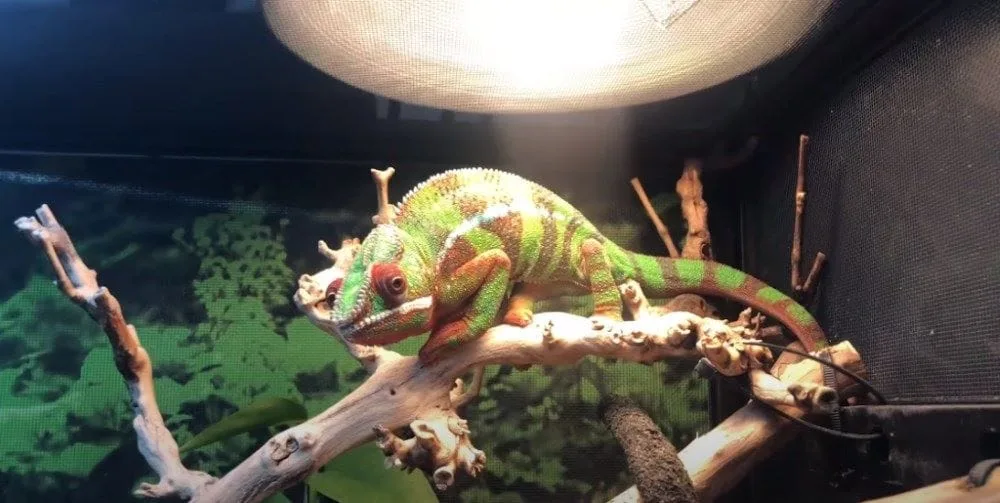
Proper humidity levels are critical for hydration, shedding, and general health. As a result, it is essential to make a perfect chameleon terrarium. The DIY Solution to controlling humidity is Hand-Misting.
Hand-misting the terrarium multiple times daily involves manually spraying water to increase humidity levels. While this method is accessible and cost-effective, it comes with limitations.
Hand-misting can lead to inconsistent humidity levels, as it relies on the owner’s availability and diligence, unlike using an automated system in a 16. Moreover, manually misting at specific times might disrupt the chameleon’s natural behaviors and sleep patterns.
In comparison, automatic misting systems offer a more sophisticated approach to humidity control. These systems consist of a water reservoir, tubing, and misting nozzles that can be strategically placed within the chameleon terrarium. They often come with timers that allow precise scheduling of misting sessions.
This approach maintains consistent humidity levels without relying on your constant presence. Additionally, automatic misting systems can create a more natural and stress-free environment by mimicking the sporadic misting patterns found in the chameleon’s natural habitat, as suggested by the Chameleon Academy. So, I recommend the automatic system as it is easier to handle.
Chameleon Food 101: Providing The Best Chameleon Diet
Foliage, Decor, and Climbing Accessories
Chameleons love to thrive, so enhancing a chameleon terrarium with appropriate Foliage and climbing options should include a mix of live plants, branches, and vines to mimic their natural habitat. A large cage is a must-have for chameleon cage decor.
To support chameleons’ climbing nature, a DIY approach involves sourcing sturdy, non-toxic branches from safe locations. Cleaning and sanitizing these branches is essential before horizontally securing them in the enclosure. This method offers authentic climbing opportunities and resting spots, fostering their natural behaviors with branches and potted plants.
Store-bought options include artificial plants, vines, and branches explicitly designed for this reptile cage, but incorporating live plants is beneficial. Some store-bought plants may contain chemicals that are dangerous to chameleons.
Considering the safety and authenticity factors, I recommend the DIY solution. Here is a table to help you understand chameleon terrarium ideas better.
| Solutions | Pros | Cons |
| DIY | More natural, cost-effective options like using live plants can enhance the chameleon tank environment. | Requires more time and effort |
| Store Bought | Durable | Can have toxic material, Expensive. |
Hydration Dripper
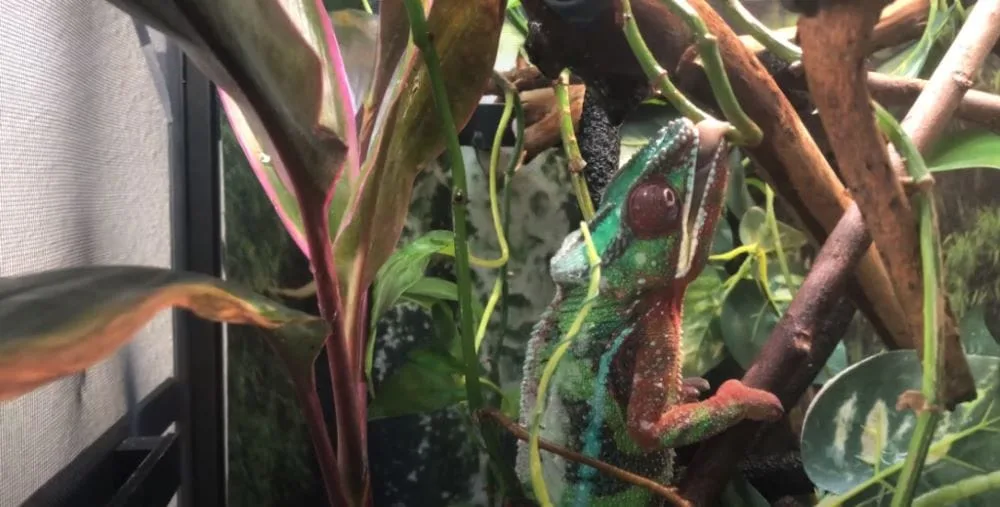
Chameleons don’t drink water from a bowl; they drink water droplets from leaves. So, having a hydration dripper in the chameleon terrarium is essential. This DIY solution will ensure that you can easily make one.
Design a hydration dripper using a clean, leak-proof container with a small hole in the bottom. This container is ideal for a screen chameleon cage to ensure proper hydration. Fill the container with clean, chlorine-free water and hang it above the cage. Adjust the hole size to control the rate of water dripping onto the leaves below.
The store-bought solution is a drip system with a reservoir, adjustable flow rates, and trustworthy mechanisms to guarantee a steady supply of water droplets. Just add dechlorinated water to the system’s reservoir.
After that, put the drip system over the spot in your pet’s habitat where you want to encourage them to drink or where they usually take a drink. But you must check the system regularly and top off the reservoir as necessary.
Although the DIY option is less expensive, I recommend using a store-bought drip system because you can easily adjust the flow rate, specifically in a hybrid cage, for optimal hydration.
The Substrate
The substrate, or the material at the bottom of a cage, is also essential for chameleons. The best choice is flat newspaper because it’s cheap, recyclable, and easy to dispose of.
Avoid small particles like sand or kitty litter, cedar, gravel, corn cob bedding, and anything that traps moisture. Moisture in bedding can cause bacteria and fungi to grow, which is unsuitable for your pet. Stick to simple and clean options for a healthy chameleon environment.
How to Clean The Terrarium?
To ensure optimal health, keep your chameleon’s home clean in a screen chameleon cage or hybrid cage. Clean up its mess, leftover food, and old skin daily from the bottom of the cage. Remove the toys from the cage weekly, clean them, and ensure they’re germ-free.
Also, clean the food and water bowls and the cage with a solution made of 3% bleach. This is especially important to prevent contamination in enclosures like the dragon ledge cage. After cleaning, rinse everything well and let it dry before putting it back in the dragon strand enclosure, ensuring the bottom of the cage is also thoroughly cleaned. This helps your chameleon stay healthy and happy in its clean home!
Keeping your pet chameleon’s terrarium clean is essential for their health and happiness. A clean environment ensures your chameleon stays free from harmful bacteria and diseases.
Clean terrariums also prevent foul odors and create a pleasant atmosphere for you and your chameleon. Proper cage cleaning promotes your pet’s well-being, enabling them to thrive in a comfortable habitat.
Remember, a tidy terrarium not only enhances the life of your chameleon but also strengthens the bond between you and your delightful reptile companion.
Easy Ways to Know: What Do Veiled Chameleons Eat?
Chameleon Terrarium FAQs
Can DIY solutions match the functionality of store-bought enclosures?
DIY solutions can offer functionality, but they require thorough research and planning to replicate the benefits of store-bought enclosures.
Are there potential drawbacks to store-bought solutions?
Store-bought solutions may be pricier and might not perfectly match your preferences or chameleon’s needs, as detailed in many chameleon care sheets.
Do veiled chameleons need bigger cages?
Yes, veiled chameleons typically require larger enclosures due to their size, active nature, and climbing habits. The minimum cage size for an adult veiled chameleon is 24x24x48 inches, but for more space, consider upgrading to a large cage size of 36.
Can I use a glass tank for my chameleon enclosure?
While glass terrariums offer a clear view, they can struggle with proper ventilation and maintaining the high humidity levels that chameleons need. Screen chameleon cages are generally preferred for chameleons due to better airflow.
Are chameleons the same as lizards, like bearded dragons or geckos?
Chameleons are indeed lizards, but they have unique needs compared to bearded dragons or geckos. They are arboreal (tree-dwelling) and require tall enclosures with good ventilation and humidity.
What size terrarium does my chameleon need?
Minimum size recommendations depend on the chameleon species. Adult veiled or panther chameleons typically need an enclosure of at least 2’x2’x4′ (width x depth x height). Bigger is always better for these vertical reptiles!
What should I put inside my chameleon’s enclosure?
Chameleon enclosures should mimic their natural arboreal habitat. Include plenty of branches and plants (live or artificial) for climbing. Vines, branches, and potted plants can also add great chameleon tank additions. Aim for a tall enclosure with good climbing opportunities.
Do I need a terrarium kit for my chameleon?
Terrarium kits can be a good starting point, but you might need to customize them to fit your chameleon’s needs. Ensure proper ventilation and lighting is achievable within the chosen kit, possibly opting for a reptile glass terrarium for better viewing.
How can I keep the humidity high in my chameleon’s enclosure?
Two main options are regularly misting the enclosure with a hand mister or using a mister system that automates the process. For larger reptile terrariums, look into products like foggers.
What kind of lighting does a chameleon need?
Chameleons need UVB lighting to synthesize vitamin D3 and UVA lighting to regulate their appetite and activity. Consult a reptile specialist for specific recommendations based on your enclosure size and chameleon species.
What do chameleons eat?
Chameleons are insectivores and typically eat feeder insects like crickets and gut-loaded feeders.
Can I keep other reptiles with my chameleon?
Chameleons are solitary animals and should not be housed with other chameleons or reptiles. They will compete for resources and stress each other out.
What branches and plants should be planted in a reptile glass terrarium?
For a reptile glass terrarium, it’s ideal to include a variety of plants and branches that replicate the reptile’s natural environment. Choose sturdy plants such as snake plants, pothos, and ferns, which can withstand the humidity and temperature inside the terrarium.
Select safe, non-toxic options like driftwood or grapevine branches, which provide excellent climbing and basking spots. Before introducing them, ensure all plants and materials are protected from pesticides.

